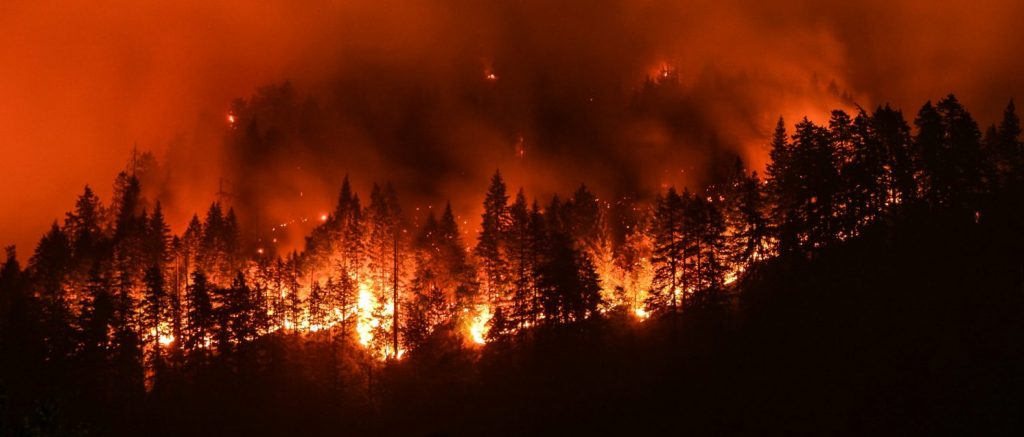Case Study: Climate Change and the Risk of Wildfires in Canada

The year 2021 was one of Canada’s busiest fire seasons in recent history according to Natural Resources Canada. The fire season started early with dry spring conditions in the prairies. From March to May, communities in Alberta, Saskatchewan and Manitoba received evacuation alerts and orders. British Columbia, Saskatchewan, Manitoba, and Ontario all experienced fire seasons well above the average. As of September 15, 2021, there were 6,224 wildfires in Canada that burned an area of 4.18 million hectares, more than three fourths the size of the province of Nova Scotia, compared to a 10-year national average of about 5,348 fires and 2.59 million hectares (National Wildland Fire Situation Report, 2021[1]).
On June 29, 2021, for a third consecutive day, Lytton, a tiny village of about 250 residents in British Columbia, broke Canada’s national heat record with an all-time high temperature of blistering 49.6C. The next day, 90% of the village was obliterated by flames in minutes as more than a dozen wildfires raged in British Columbia amid the most extreme heat wave recorded in the Canadian Pacific Northwest. That was British Columbia’s third worst fire season in terms of area burned behind 2018 and 2016 with the death toll ranging in the hundreds.
From July to August 2021, forest fires blazed through northwestern Ontario forcing thousands of First Nation people to flee their communities in Northern Ontario. In 2021, Ontario saw an exponential surge in wildfires that, at 1,198, were more than double the 10-year average of 520 wildfires. Over 793,000 hectares of land were burned, an area larger than the Greater Toronto Area (GTA) and more than five times the annual average of about 153,000 hectares
According to Natural Resources Canada, climate change will affect our forests in multiple ways. Some effects will be sudden and dramatic while others will be gradual and subtle. Global warming and forest fires are linked in a vicious cycle: warmer temperatures increase the likelihood of fires and burning forests release greenhouse gasses in the atmosphere that worsen global warming. In British Columbia for example, extreme wildfire years in 2017 and 2018 each produced three times more greenhouse gases than all other sectors of the province combined. In the words of Dr. Mike Flannigan, a professor with the Department of Renewable Resources at the University of Alberta who has researched wildland fires for decades, our “future is smoky.”[2]
Canadian wildland fire management agencies are tasked with managing wildland fires. Wildland fire management includes fire preventions, mitigations, detection, and response to forest fires. The annual national cost of forest fire protection has increased by about $150 million per decade since data collection started in 1970 reaching close to 1.5 billion dollars in 2017 or about $40 person.
The questions below are intended to deepen your understanding of the threat of wildfires and their associated costs. For each question, there are resources that you can use as a starting point for your research, but you are not limited to these resources. In a paragraph or two, provide an answer to each question that is well supported by the evidence you collected (i.e., data and articles).
- How costly are wildfires for residents, businesses, critical infrastructure, and wildland fire management agencies?
Resource: Government of Canada, Cost of wildland fire protection (nrcan.gc.ca)
- For a province of your choice, find how frequent the wildfires are. What are the province’s major fire risk areas and major historical wildfires?
Resources:
Ontario Ministry of Natural Resources and Forestry, Forest Fire Info Map (gov.on.ca)
BC Wildfire Service, BC Fire Atlas
BC Wildfire Service, BC Major Historical Wildfires
- How are wildfires and climate change related?
Resource: How wildfires affect climate change — and vice versa (theconversation.com)
- How will the rising risk of wildfires affect our ability to purchase fire damage coverage for our homes and properties and the solvency of insurance companies?
Resources:
Insurance Bureau of Canada, Wildfire insurance coverage
Insurance company overwhelmed by cost of California wildfire, goes out of business
Watch “State takes over Merced insurance company unable to pay out claims after Camp Fire”

